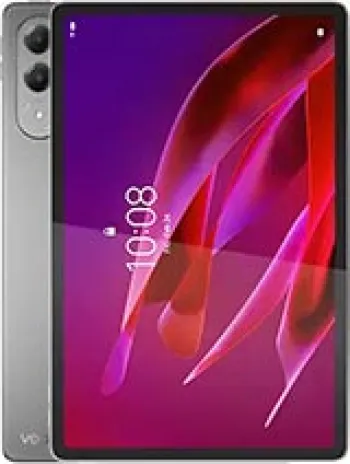
Network and Connectivity
The Lenovo A800 supports GSM and HSPA network technologies, offering mobile connectivity through 2G and 3G bands. Specifically, it supports GSM 900 and 1800 bands on SIM 1 and SIM 2, as well as HSDPA 900 and 2100 bands for 3G. The device therefore provides moderate internet speeds through HSPA technology. For local connectivity, the A800 comes with Wi-Fi 802.11 b/g/n and can serve as a hotspot, supporting a variety of wireless networking options. Additionally, the device features Bluetooth version 4.0 with A2DP and EDR for enhanced audio streaming and data transfer capabilities.
Launch and Availability
Lenovo announced the A800 in January 2013, and it was released the same month. Over time, the device has been discontinued, reflecting its journey from a competitive entry-level smartphone to a legacy device. It entered the market at a price point of around 120 EUR, targeting budget-conscious consumers looking for essential smartphone functionality without the high cost associated with flagship models.
Design and Build
The Lenovo A800 measures 133.5 x 68.9 x 11.5 mm and weighs 155 grams, giving it a relatively compact and sturdy form. This phone is available in black and white color options, allowing users to choose according to their personal aesthetic preference. It supports Dual SIM cards (Mini-SIM), which is advantageous for users managing multiple phone numbers or networks without the need for multiple devices.
Display
The smartphone boasts a 4.5-inch IPS LCD display, ensuring reasonable viewing angles and moderate color accuracy. With a resolution of 480 x 854 pixels, the display has a pixel density of approximately 218 ppi, delivering clear and readable screen content suitable for daily usage such as browsing and social media engagement. The screen-to-body ratio stands at about 60.7%, indicating a functional design though not bezel-less by today's standards.
Platform and Performance
Running on Android 4.0.4 Ice Cream Sandwich, the Lenovo A800 provides a user interface that, while somewhat dated by current Android standards, was considered robust at the time of release. The device is powered by the Mediatek MT6577T chipset built on 40 nm technology, featuring a dual-core 1.2 GHz Cortex-A9 CPU and PowerVR SGX531 GPU. This combination ensures the device can handle basic tasks and applications, although it is not designed for heavy gaming or multitasking.
Memory and Storage
The smartphone houses 512MB of RAM, which is modest by today’s standards but sufficient for the device's intended usage scenario. Internal storage is set at 4GB, out of which 1.65GB is available for the user. For additional storage needs, the A800 provides a dedicated microSDHC slot, enabling users to expand storage as required up to available card limits.
Cameras
Focusing on photographic capabilities, the Lenovo A800 is equipped with a 5 MP rear camera featuring autofocus. This camera setup is capable of capturing decent images for everyday documentation and offers video recording capabilities at 720p resolution. Notably, the device does not include a front-facing camera, reflecting its design focus on simplicity and functionality at an economically viable price point.
Sound and Multimedia
The Lenovo A800 is equipped with a loudspeaker and a 3.5mm headphone jack, ensuring compatibility with a wide range of traditional headphones and external speakers. This sound setup supports various multimedia needs, from playing music to viewing media content, providing adequate audio performance for users in everyday situations.
Additional Features
For navigation, the device includes GPS capabilities, although it does not support NFC technology. Users can listen to FM radio, providing entertainment and real-time news access without relying solely on internet-based services. The microUSB 2.0 port supports charging and data transfers, which are standard functionalities of the time.
Sensors and Battery Life
Sensors include an accelerometer and proximity sensor, used for features such as auto-rotation of the screen and dimming display during calls. The device hosts a removable Li-Ion 2000 mAh battery, catering broadly to the power requirements of the device while providing the option for replacement, which might appeal to users seeking device longevity without full replacements.
Conclusion
The Lenovo A800 was crafted to meet the essential smartphone needs of its time, offering reliability in connectivity, a straightforward operating system, and basic multimedia capacities. For consumers during its release period looking for an entry-level phone that covers everyday tasks, the A800 was a functional choice. Today, even with its discontinuation, it offers a glimpse into the practical approach to smartphone solutions aimed at combining affordability with adequacy in performance and design.
Key Features of Lenovo A800
- Network Technology: GSM / HSPA
- Display: 4.5-inch IPS LCD with 480 x 854 pixel resolution
- Operating System: Android 4.0.4 (Ice Cream Sandwich)
- Processor: Dual-core 1.2 GHz Cortex-A9
- Memory: 512MB RAM, 4GB internal storage, expandable via microSDHC
- Main Camera: 5 MP with autofocus, supports 720p video
- Battery: Removable Li-Ion 2000 mAh
- Dual SIM support with Mini-SIM slots
- Connectivity: Wi-Fi 802.11 b/g/n, Bluetooth 4.0, GPS
- 3.5mm audio jack and FM radio
- Compact design: Dimensions 133.5 x 68.9 x 11.5 mm, Weight 155 g
Drawbacks of Lenovo A800
- Discontinued model, no longer available in the market.
- Runs on an outdated operating system, Android 4.0.4 (Ice Cream Sandwich).
- Low internal storage with only 4GB, and limited user available space (1.65GB).
- Limited RAM capacity of 512MB, potentially affecting multitasking performance.
- No front (selfie) camera available.
- Display resolution is relatively low with 480 x 854 pixels (~218 ppi).
- Uses an older chipset, Mediatek MT6577T (40 nm), which may affect overall performance.
- No NFC support, limiting mobile payment options.
- Thick body design with dimensions of 11.5 mm in thickness, making it bulkier compared to modern smartphones.

View Also
More Phones
All Rights Reserved +14267 Phones © Mobilawy 2025

























